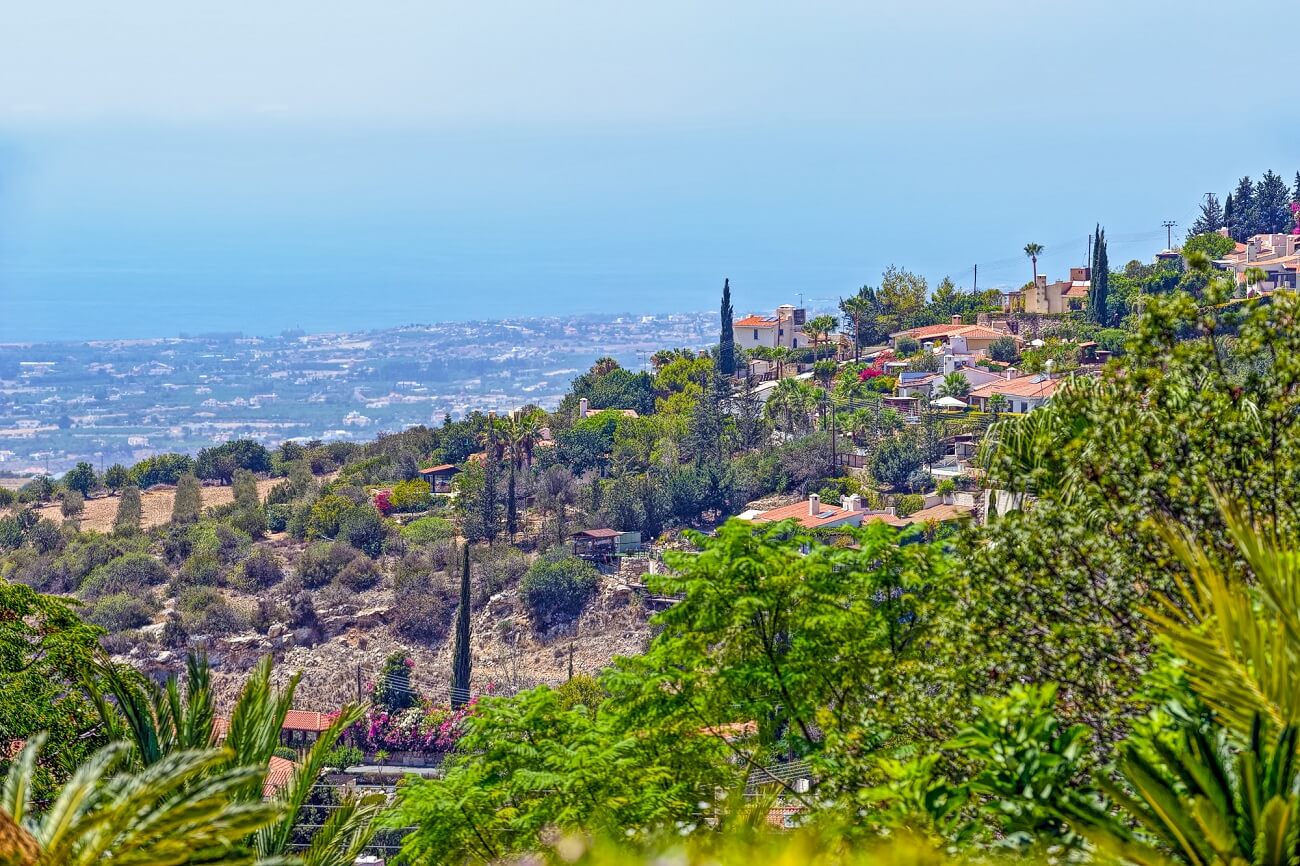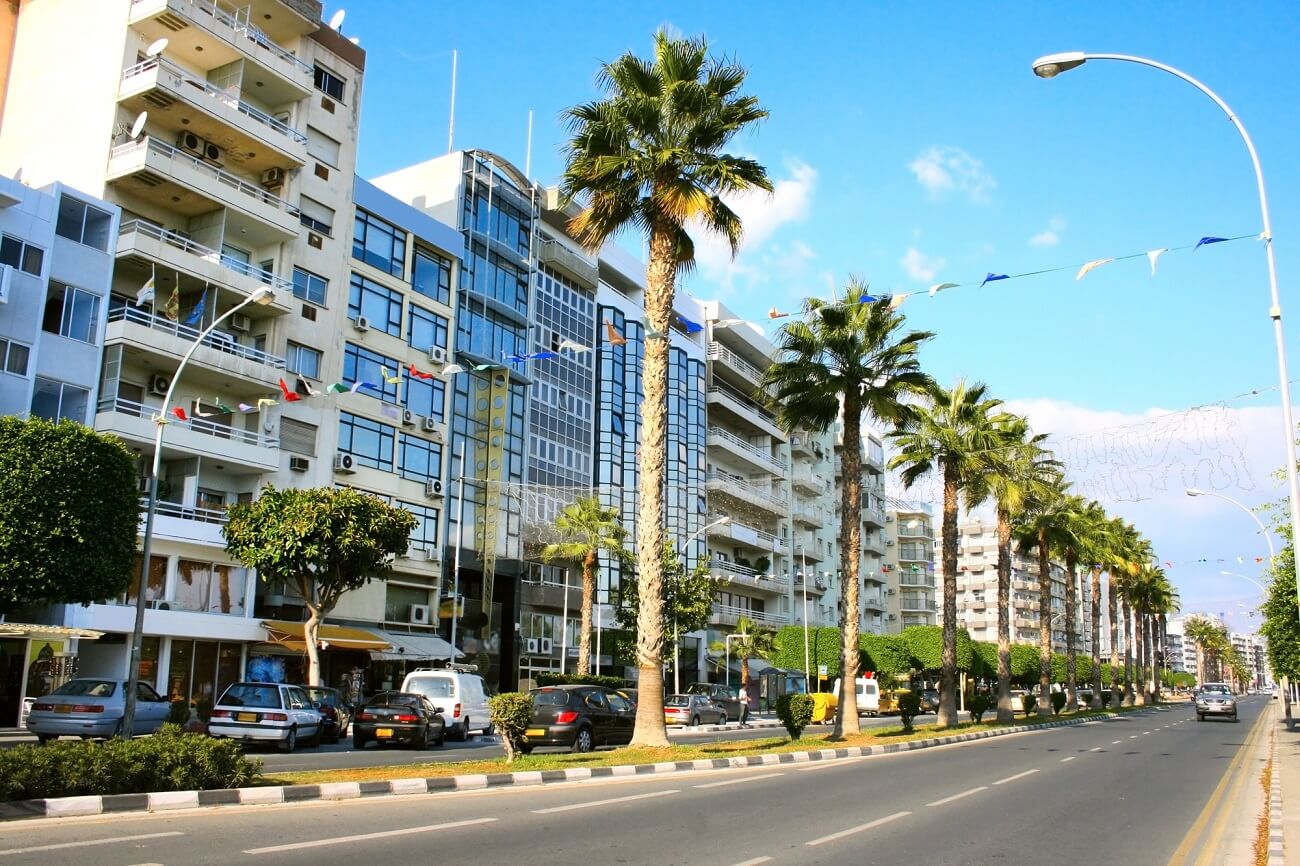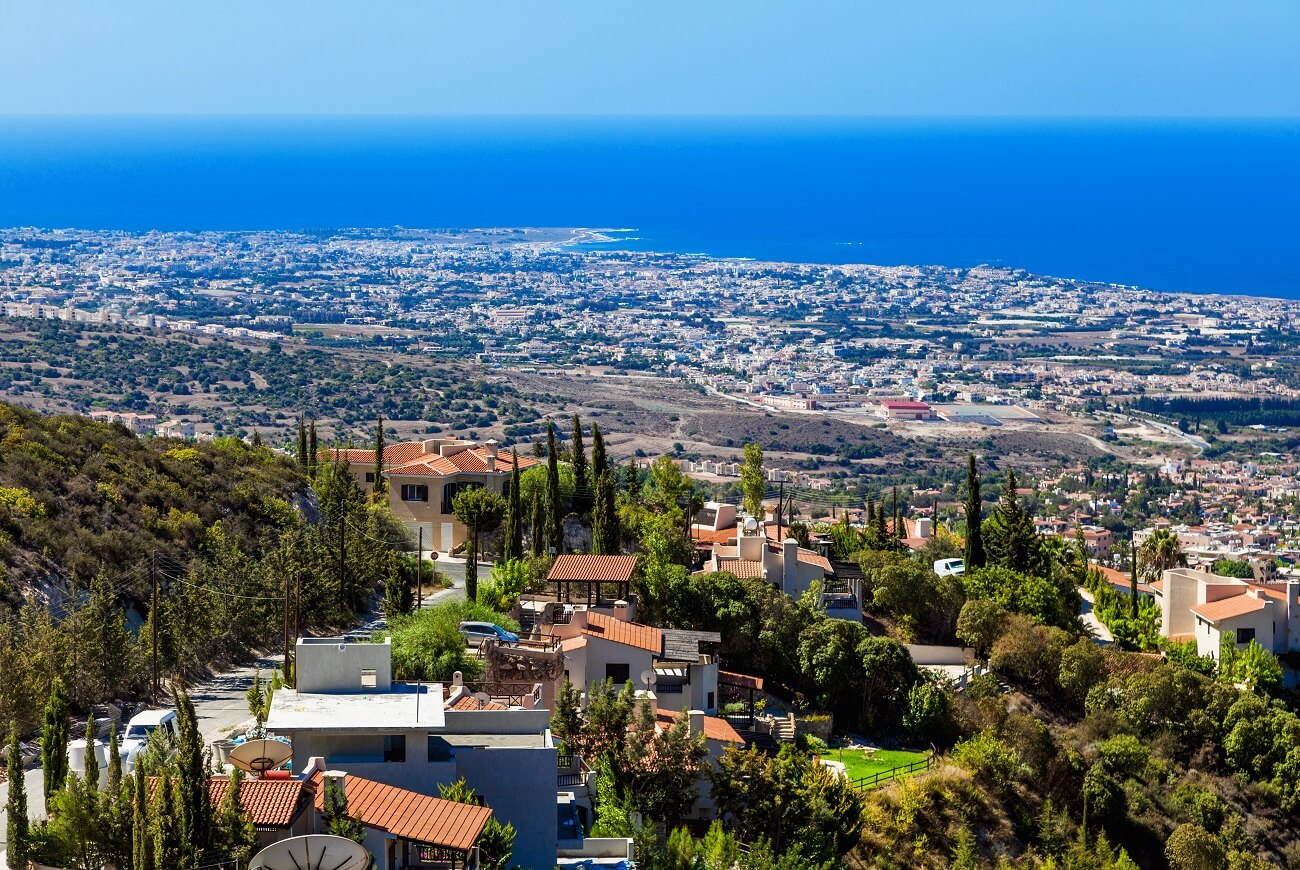

The resorts of Cyprus attract numerous tourists with their beautiful beaches, turquoise waters and ample opportunities for recreation and entertainment.
In addition to beaches and picturesque views, Cyprus has many attractions to offer its guests: from ancient archaeological sites and medieval castles, wineries that keep old traditions and secrets of wine making, to exciting modern attractions that will appeal to lovers of exciting entertainment, regardless of their age.
Do you want to know what are the most interesting places in Cyprus worth visiting during your vacation? Meet our selection - for clarity, the sights of Cyprus on the map.

Depositphotos
Paphos and surroundings - what is worth seeing
Castle of the Forty Columns (Saranta Kolones)
History buffs should explore the ruins of an ancient Byzantine castle founded in the 17th century to defend the city of Paphos from Arab invaders and reconstructed in the 13th century.
The castle was built on the basis of 40 granite columns, hence its name. The structure was destroyed in the 13th century due to an earthquake. The remains of towers and dungeons that have survived to this day are part of the Archaeological Park of Paphos.

Depositphotos
2. Fortress of Paphos
The fortress with a rich history is located in the harbor of Kato Paphos and is one of the most famous sights of the city. Built to replace Saranta destroyed by the earthquake Kolones, was intended to protect the port.
During its existence, the castle was repeatedly rebuilt, strengthened and changed its purpose. So, its premises served as a haven for the Turkish guard, a prison, a mosque, and later even a warehouse for salt.
Today, picturesque views of the surroundings open from the top of the castle, and various festivals and entertainment events take place on the square in front of the castle, for example, the Aphrodite Festival (Pafos Aphrodite Festival), held annually in late August - early September.

Depositphotos
3. Royal tombs in Paphos (The Tombs of the Kings)
The necropolis was built in the 3rd century BC and today is a UNESCO World Heritage Site. Contrary to the name, no kings were buried here, since the royal institute was abolished in 312 BC. Only high officials, prominent personalities and members of their families were buried here. And the location got its name due to the impressive size of the funerary monuments. The tombs cover an area of about 1.2 square kilometers.

Depositphotos
4. Petra tou Romiou
This attraction, also known as Aphrodite's rock, is located about 25 kilometers east of the center of Paphos and is a lone rock rising above the water. The rock is still visible from the road leading from Paphos to Limassol, and is shrouded in several myths and legends. According to the most popular of the legends, it was in this place that the goddess of love Aphrodite came ashore from the sea foam. According to the legends, a person who swam around the rock three times will be rewarded with eternal youth, beauty, luck and love.
Next to the rock is a beautiful beach surrounded by crystal clear waters. However, they are often restless, so swimming here should be done with great care.
The place is very romantic, picturesque and well suited for photo shoots.

Depositphotos
5. Catacombs of Saint Solomon (Agia Solomoni Сatacomb)
This Christian shrine is located near the port of Kato Paphos. Its name is associated with the name of the righteous Solomon, who, according to legend, was hiding in the catacombs from the Romans along with her sons.
Today, the entrance to the catacombs is marked with a large pistachio tree, which is considered sacred. There is an opinion that a piece of fabric tied to one of its branches helps to cure ailments.
Inside the cave are decorated with frescoes of the 12th century and numerous icons.

Depositphotos
6. Aquapark "Aphrodite"
A bright and fun water park located in Kato Paphos offers guests high-speed slides, including Free Fall and Kamikaze familiar to many adrenaline lovers, a lazy river, a wave pool, family rafting, a children's area with water activities, as well as food courts , free WI-FI and much more.
The cost of visiting is:
- for an adult - 31 euros;
- for a child under 12 years old - 18 euros.
Children under 3 years old can visit the water park free of charge.
The park accepts both cash and credit card payments.
Bus number 611 stops next to the water park, as well as free parking for cars.
.jpg)
Depositphotos
7. Akamas Peninsula
Naturally beautiful place about an hour from Paphos, which includes forested areas, plateaus, beautiful valleys and gorges, as well as sandy beaches and rocky shores surrounded by clear waters.
The peninsula got its name in honor of the Athenian warrior Akamas, who was the son of the ruler of Athens, Theseus, and arrived on the peninsula after participating in the Trojan War.
The area of the territory is about 230 square kilometers. On the peninsula there are foxes, snakes and other reptiles, many birds, as well as rare plant species. And the beaches of the peninsula are one of the few nesting places for sea turtles in the Mediterranean.
The forests of the peninsula are equipped with picnic areas and several hiking trails, two of which pass through the famous baths of Aphrodite. For hiking, we recommend taking comfortable shoes, hats that will protect from the sun, and stocking up on drinking water.

Depositphotos
8. Baths of Aphrodite
The baths of Aphrodite are a small grotto framed by green vegetation, from which water flows, forming a miniature lake. The pond is always clean and cool. According to legend, Aphrodite loved to swim in these waters, and it was here that she met her beloved Adonis.
The location is surrounded by a beautiful park with nature trails and benches for relaxing. The park is inhabited by many species of birds, which can be observed during a walk.

Depositphotos
9. Avakas Gorge
The picturesque gorge, located on the Akamas Peninsula, is a real paradise for lovers of hiking in nature. The rich flora and fauna of these places keep many secrets, among which is the unique plant Centaurea akamantis. It is endangered and is found only in the Avakas Gorge .
As you walk, admire the pines, cypresses and wild flowers. You may be lucky to meet representatives of the animal world living in the gorge, including foxes and hares, various reptiles and bats.
The route cannot be called easy, so we recommend wearing comfortable clothes and shoes, sun protection hats, and taking drinking water with you.

Depositphotos
10. Kykkos Monastery
This monastery, also known as the monastery of Our Lady of Kik, is located at an altitude of 1318 meters in the Troodos mountain range and is quite a popular tourist destination.
It is famous not only for being located in a picturesque area, but also for its luxurious interior decoration, as well as a unique museum that contains a collection of Christian art: icons and manuscripts, embroidered items and many other antiques.
However, the main decoration of the monastery is the icon of the Mother of God, which has a rich history, survived a powerful fire and, according to beliefs, has miraculous properties.

Depositphotos
Sights of Limassol
11. KEO Winery
Few people know that the Cypriots are considered the oldest wine producers in the world. The history of winemaking in Cyprus dates back to 2000 BC.
The winery in the village of Mallia, located about 30 kilometers from Limassol, was one of the first built on the island. It is owned by KEO, which today is one of the leaders in the wine and brewing industry in Cyprus and sells its products in more than 30 countries around the world.
The hallmark of Cypriot winemaking is Commandaria St. John wine, which is made from one of the oldest grape varieties in the world. The drink got its name from the Knights of the Order of St. John, who popularized it in Europe during the Crusades.
The winery also produces other excellent red, white and rosé wines.
You can get acquainted with the products of the leading wine companies in Cyprus during the Limassol Wine Festival, which is held annually in late August - early September. During the holiday, guests have the opportunity not only to taste the best Cypriot wines, but also to enjoy Greek music and dancing.

Depositphotos
12. Salt lake and flamingos
The salt lake, located on the Akrotiri peninsula, is the largest in Cyprus. Its area is more than 10 square kilometers.
The lake and its surrounding area are home to sea turtles and many bird species. During the summer, the lake usually dries up. However, during the rainy season, when the reservoir fills up, it becomes a favorite habitat for large flamingos. According to experts, the average number of these noble birds visiting the lake in winter is from 2,000 to 20,000 individuals.

Depositphotos
13. Kolossi Castle
This well-kept castle dating back to the 13th century is located in the village of the same name near Limassol.
The height of the castle is 21 meters, and the thickness of the walls is 1.25 meters, which allowed the building to withstand not only attacks, but also earthquakes.
Once the castle housed the high command of the Knights Templar, and later - the headquarters of the Knights of the Order of St. John. The commander's abode was on the highest level of the castle.
In the vicinity of the castle, sugar cane and vineyards were cultivated, from the harvest of which the famous Cypriot wine Commandaria was produced.

Depositphotos
14. Ancient city of Amathus
History buffs should visit the archaeological site of Amathus near Limassol, which is one of the most important historical monuments in Cyprus.
The settlement was repeatedly subjected to various conquerors, including the Persians, Ptolemies, Romans and Byzantines, and was eventually destroyed in the 7th century AD as a result of the Arab invasions. On the territory of Amathus are the ruins of the temple of Aphrodite. Also here was found the world's largest stone amphora, which is stored in the Louvre Museum. The weight of the amphora is about 14 tons, and the height is 185 centimeters.
As is customary in Cyprus, the history of the location is not complete without myths and legends. So, according to one of the legends, it was here that Theseus left the pregnant Ariadne after the battle with the Minotaur.
Today, the attraction is included in the list of UNESCO World Heritage Sites.

Depositphotos
15. The ancient city of Kourion
Another location not far from Limassol, which is definitely worth a visit for connoisseurs of ancient settlements. The ancient city-state was built on a hill and offers a majestic view of the Mediterranean Sea.
In addition to magnificent views, while visiting this Archaeological Park, you can admire the beautiful mosaic images that adorn the remains of buildings, see historical monuments, including the House of Gladiators, the House of Achilles, the sanctuary of Apollo Gilates, public baths, and also visit the restored amphitheater, which was built in end of the 2nd century BC.

Depositphotos
Protaras and its attractions
16. Show of dancing Fountains (Magic Dancing Waters)
A 60-minute light-and-music performance featuring a graceful dance of fountains and animated laser stories about the Greek Zorba , the history of mankind and the 7 wonders of the world in an unusual interpretation.
The show culminates in a highly realistic simulation of a volcanic eruption accompanied by roaring rocks, lava flows, flames and smoke escaping from the crater. The shape of the volcano resembles the outlines of the Sicilian Etna, and it took 4 years to create it.
Despite the apparent realism, the show is absolutely safe and will appeal to both adults and young viewers.
Admission fee: 23 euros for adults and 15 euros for children.
If desired, a visit to the show can be combined with dinner at a restaurant. In this case, the cost of the event will be 38 and 25 euros, respectively.

Depositphotos
17. Fig Tree Bay
Beautiful and popular beach with golden sand and excellent infrastructure, marked with a blue flag. There are toilets and showers, opportunities for water sports.
The shallow and clear water makes the beach ideal for families with small children. It is often crowded, therefore, in order to take comfortable seats, it is advisable to arrive early.
Entrance to the beach is free, however sunbeds and umbrellas are subject to a fee of EUR 2.50 each.
Local attractions are a small island, which can be reached by swimming from the coast, as well as fig trees growing near the beach. Thanks to the latter, the beach got its famous name.
Near the beach there are many cafes and restaurants, as well as a parking area.

Depositphotos
Beauty of Ayia Napa
18. Blue Lagoon
A picturesque location near the popular resort of Ayia Napa. You can visit on your own by car or with a sea excursion, which are organized from Protaras and Ayia Napa.
The rocky coast blends harmoniously with the azure waters, showing off the simple yet breathtaking beauty of nature.
Tourists who arrive by boat with an excursion can swim in the lagoon and admire its many colorful inhabitants.

Depositphotos
19. Monastery of Ayia Napa
The monastery was built in the 14th century on the basis of a cave in which, according to legend, a local hunter found an icon of the Virgin.
During its existence, the building served as a women's, and later a men's monastery. Later, in the 19th century, the premises of the monastery were used for the needs of the community, and its land was leased to local farmers.
In 1950, the monastery was restored and served as a venue for church meetings, and currently receives tourists as a museum.

Depositphotos
20. Cape Greco
Cape Cape Greco, also known as Cavo Greco is located near Ayia Napa and attracts both tourists and locals due to its natural beauty. Wedding and romantic photo shoots are held here, walks and colorful sunsets are enjoyed.
.png)
Depositphotos
Attractions of Larnaca on the map
21. Church Saint Lazarus (The Church of Agios Lazaros)
The stone church, dating from the 9th - early 10th century, is one of the most important sights in Cyprus. After all, it is here that the relics of St. Lazarus lie, who lived in Cyprus after, according to the Gospel, Jesus Christ resurrected him.
Previously, the church was crowned with three domes, but they were destroyed during the Turkish occupation.
Today, the interior of the church is decorated with a gilded iconostasis crowned with ancient icons, as well as a skillfully made wooden altar.

Depositphotos
22. Kamares Aqueduct
The structure was built in 1750 by the Ottoman ruler of Larnaca. The aqueduct consisted of 75 arches that brought clear water from the Tremitos River to Larnaca. It is interesting to note that the construction was carried out at the ruler's own expense.
The quality of the construction is evidenced by the fact that the aqueduct served for almost 200 years and only in 1939 was replaced by more modern structures.
The aqueduct is visible from the road leading from Larnaca to Limassol, and looks beautiful and majestic both during the day and at night.

Depositphotos
23. The settlement of Choirokoitia
This Neolithic settlement was discovered in 1934 near Larnaca, is of great historical value and is part of the UNESCO World Heritage Site.
Tourists are presented with round-shaped houses made of stone and clay located at the foot of the mountains.
Also during the excavations were found tools, dishes and jewelry.

Depositphotos
More articles
- 10 Best Bali Hotels with Private Beaches
- Hotels in Indonesia on the rocks: the most incredible landscapes
- The best 5-star hotels in Ubud
- Top 8 largest hotels in the Seychelles
- Bali's Top 10 Power Spots
- Joali Being the first wellness island in the Maldives
- The best hotels in Bali with villas on the rocks
- Best Bali Hotels Adults Only
- The best hotels in Bali for family holidays
- The best family hotels in Seychelles



